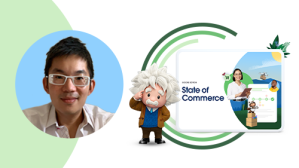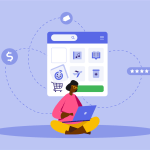The world of commerce is changing with new channels and new expectations making it harder than ever for companies to connect with their customers.
Our second edition State of Commerce report reveals many other challenges for commerce providers. For those in Singapore and Thailand, technology, budget, and resource constraints are all top of the list. Others included lack of training and internal alignment.
We sat down with Pascal Tran Binh, APAC Chief Information Officer, L’OCCITANE Group to discuss these and other findings from the report. The L’OCCITANE Group comprises six leading natural beauty brands and has a global network of more than 3,000 retail outlets in 90 countries. And while the Group’s heritage is deeply rooted in the brick-and-mortar business, it has a strong digital presence underpinned by Commerce Cloud which helps it to provide a seamless ecommerce experience.
Pascal shared the journey that the L’OCCITANE Group has been on to adapt to changes in customer expectations. He also shared his perspective on how to prioritise resources to provide a frictionless customer experience.
Here’s what we learned.
Adopt the right structure to meet customer needs
According to our State of Commerce report, commerce leaders in Singapore and Thailand share the same top two priorities — expanding their customer base and growing revenue.
Pascal said these goals were a given, but to achieve them, companies need to engage with each customer in a way that makes the most sense for that individual. For the L’OCCITANE Group, that meant moving away from a centralised operating model.
“Everything was very centralised in the past, including our decision making and technology choices. It led to a one-size-fits-all approach to customer engagement. However, the way customers want to interact and engage with brands today is different in each country. The first step in our transformation was to acknowledge that fact. We then reassessed our ways of working and how we made decisions, and localised our processes. From there, we adapted our technical stack to match those shifts,” said Pascal.
Identify the channels most important to the customer journey
Commerce is increasingly distributed and complex with consumers and business buyers transacting across many channels. Our State of Commerce report found that 69% of digital leaders had invested in new channels over the past two years and 83% are investing in new channels now.
In Singapore, the top three investments include point-of-sale, third-party marketplaces, and websites. In Thailand, social media holds the top spot followed by websites and third-party marketplaces.
We asked Pascal for his view on the diversification of channels and how to adapt to all the new ways customers want to engage. He emphasised the need to prioritise and define what’s most important.
“What was important for us is to realise that the physical store still has a role to play in allowing our customers to experience our products. So we had to look at how to incorporate other channels around that and define the overall journey for each market,” said Pascal.
Of course adding new channels is not just about switching on new platforms. Pascal pointed out that’s just the first step.
“Adapting to customers’ expectations is a continuous journey. You need to be able to connect all the data from each touch point and identify where to make improvements. And it is not just a technology issue. You need to bring in new talent and skills,” said Pascal.
Drive better customer experiences with data
Data plays a critical role in providing more personalised customer experiences, from pre- to post-sale.
However, just over half of those we surveyed in Singapore and Thailand say they are effective at using data for personalisation.
Pascal indicated that organisations are challenged by the volume of data created by all of their customer touchpoints.
“We have more data than any human can possibly crunch, so we need to focus on what’s most meaningful. At the L’OCCITANE Group, we start by thinking about what decisions we need to make to better serve our customers,” said Pascal.
A more recent priority for the L’OCCITANE Group is extracting more insights from unstructured data. This includes comments made on its ecommerce platform. The Group is currently experimenting with AI to gather insights as efficiently as possible.
“We are extracting key words and patterns so we can reflect on the voice of the customer and look beyond what the numbers are telling us,” said Pascal.
Focus on what provides value fastest
In times of economic uncertainty, it can be hard to know where to focus your resources — particularly if those resources are already constrained. Pascal’s final piece of advice was to focus on delivering value fast and providing a frictionless customer experience.
“We will always have more things we want to do than the means to do them, so we need to focus on what will deliver value as soon as possible. That is generally removing points of friction from the customer experience. It is also important to measure and make sure that what we’re doing is driving meaningful change.”
Take a deeper look at how the L’OCCITANE Group and other commerce leaders are adapting to engage customers and grow revenue. Watch our webinar ‘Future of Commerce — Serve Today’s Customers Like No Other’.

























